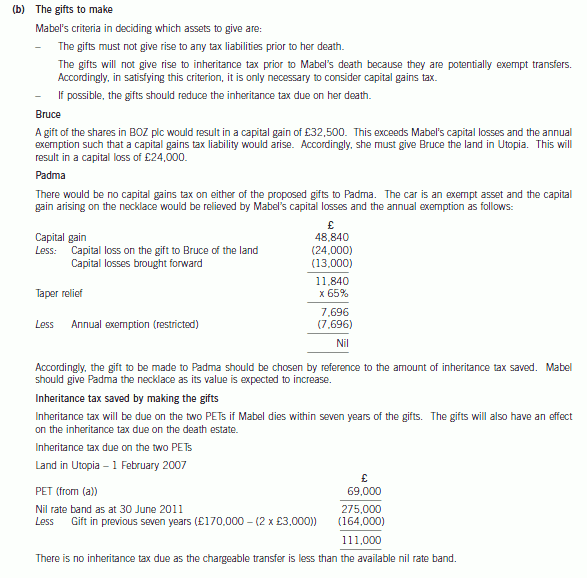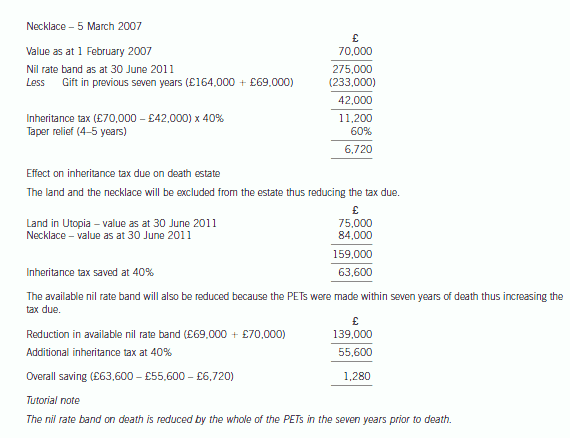什么学历可以参加ACCA考试呢?
发布时间:2022-02-25
参加一项考试最重要的就是报名,很多同学对ACCA考试的报名条件不是很了解,接下来就和51题库考试学习网一起了解一下吧!
一、ACCA报考条件:
1.凡具有教育部承认的大专以上学历,即可报名成为ACCA的正式学员;
2.教育部认可的高等院校在校生,顺利完成大一的课程考试,即可报名成为ACCA的正式学员;
3.未符合1、2项报名资格的16周岁以上的申请者,也可以先申请参加FIA(Foundations in Accountancy)基础财务资格考试。在完成基础商业会计(FAB)、基础管理会计(FMA)、基础财务会计(FFA)3门课程,并完成ACCA基础职业模块,可获得ACCA商业会计师资格证书(Diploma in Accounting and Business),资格证书后可豁免ACCAF1-F3三门课程的考试,直接进入技能课程的考试。
二、在此分享几点ACCA考试学习技巧,以便大家查阅:
1.在阅读ACCA教材之前,请先阅读《ACCA Syllabus》,以了解每门课程的教学要求和教学目的,做到有的放矢。
2.具体看某一本教材,争取做到SQ3Rs,即Survey, Questions, Read, Recall, Review。
Survey:看某一章之前,浏览章节名称,阅读小结和教学目的,对整个章节的脉络有个大致了解。
Question:自己提出问题,即希望学完这一章,能够解决什么问题。教学目的中所提到的问题尤为重要。
Read:透彻阅读全章后,回答问题,并确认是否满足教学要求。做书中的案例和课本中的习题,分析答案。你也许会发现,把时间划分成20分钟或30分钟一段,可以保持精力集中。 Recall:每一部分/章节完成后,不参考课本,写下每一部分/章节的主题思想。
Review:审核所写是否正确。再阅读一遍章节,试着整体把握主题,将更有效果。最后能对照大纲想起每一部分的主要内容,主要计算方法和相关重要概念。但是没有必要过分精读,不要试图把每一部分背下来。
3. 在看书的同时做笔记非常重要,但不能是简单地照抄书本,必须用自己的话来做笔记,要求做到简明扼要、重点突出、条理清晰。把自己所记的笔记作为教材和相关参考资料的补充,更有利于大家掌握知识点。
以上就是今天51题库考试学习网为大家分享的ACCA考试相关的内容,小伙伴们都清楚了吗?如需了解更多ACCA考试相关的信息,请持续多多51题库考试学习网。
下面小编为大家准备了 ACCA考试 的相关考题,供大家学习参考。
(b) Mabel has two objectives when making the gifts to Bruce and Padma:
(1) To pay no tax on any gift in her lifetime; and
(2) To reduce the eventual liability to inheritance tax on her death.
Advise Mabel which item to gift to Bruce and to Padma in order to satisfy her objectives. Give reasons for
your advice.
Your advice should include a computation of the inheritance tax saved as a result of the two gifts, on the
assumption that Mabel dies on 30 June 2011. (10 marks)


5 Your manager has heard of Maslow’s hierarchy of needs theory and how it has some relevance to motivational techniques.
Required:
(a) Explain Maslow’s hierarchy of needs theory. (10 marks)
5 The way in which managers’ duties are undertaken can significantly influence the satisfaction that employees derive from their work. Abraham Maslow suggested that individuals have a hierarchy of personal needs which are identifiable, universally applicable and can be satisfied in the workplace. Understanding this concept provides guidance to management as to the appropriateness of
motivational techniques.
(a) Maslow’s theory of motivation is a content theory. Its basic idea is that each individual has a set of needs which have to be
satisfied in a set order of priority.
Maslow suggested that individuals have five needs:
Self-actualisation
(or self fulfilment)
Esteem needs
(or ego)
Social needs
Safety needs
Physiological needs
These needs are arranged in a hierarchy of importance and movement is upwards, from physiological needs to selfactualisation.Any individual will always want more; each need must be satisfied before the next is sought. However – andcritically so far as motivation in the workplace is concerned – a satisfied need is no longer a motivator.
The theory is usually presented in the shape of a triangle, with physiological needs at its base and self-actualisation at itsapex. The triangle shape has a clear significance. As an individual moves up toward the apex, the needs thin out, that isphysiological needs are far greater than self-actualisation needs. For many individuals, reaching social needs is often thehighest need to be satisfied. The theory is sometimes presented as a staircase; again with self-actualisation at the top. Thissecond diagrammatic form. reflects the application of the theory to more modern situations, where it can reasonably beassumed that those within the organisation have already achieved physiological and safety needs. For such individuals, socialand esteem needs may well be greater.
Physiological needs are the basic survival needs which, although part of the theory, probably have less relevance today. Theseneeds are usually seen as food, shelter (which is sometimes noted as a safety need), warmth and clothing.
Safety needs are the desire for security, order, certainty and predictability in life and freedom from threat. The above two so-called ‘lower order needs’ dominate until satisfied.
Social needs are the gregarious needs of mankind, the need for friendship, relationships and affection. This is often seen as the desire to be part of a family.
Esteem needs are the desire for recognition and respect, often associated with status, especially in the modern world.
Self-actualisation (self fulfilment) is the ultimate goal. Once this state is achieved the individual has fulfilled personal potential.
However, later work by Maslow has suggested that there are two additional needs; freedom of enquiry (free speech and justice) and knowledge (the need to explore and learn). These additional needs are a further development of social needs and recognise the changing nature of modern life.
(b) The marketing director of CTC has suggested the introduction of a new toy ‘Nellie the Elephant’ for which the
following estimated information is available:
1. Sales volumes and selling prices per unit
Year ending, 31 May 2009 2010 2011
Sales units (000) 80 180 100
Selling price per unit ($) 50 50 50
2. Nellie will generate a contribution to sales ratio of 50% throughout the three year period.
3. Product specific fixed overheads during the year ending 31 May 2009 are estimated to be $1·6 million. It
is anticipated that these fixed overheads would decrease by 10% per annum during each of the years ending
31 May 2010 and 31 May 2011.
4. Capital investment amounting to $3·9 million would be required in June 2008. The investment would have
no residual value at 31 May 2011.
5. Additional working capital of $500,000 would be required in June 2008. A further $200,000 would be
required on 31 May 2009. These amounts would be recovered in full at the end of the three year period.
6. The cost of capital is expected to be 12% per annum.
Assume all cash flows (other than where stated) arise at the end of the year.
Required:
(i) Determine whether the new product is viable purely on financial grounds. (4 marks)

(b) a discussion (with suitable calculations) as to how the directors’ share options would be accounted for in the
financial statements for the year ended 31 May 2005 including the adjustment to opening balances;
(9 marks)
(b) Accounting in the financial statements for the year ended 31 May 2005
IFRS2 requires an expense to be recognised for the share options granted to the directors with a corresponding amount shown
in equity. Where options do not vest immediately but only after a period of service, then there is a presumption that the
services will be rendered over the ‘vesting period’. The fair value of the services rendered will be measured by reference to
the fair value of the equity instruments at the date that the equity instruments were granted. Fair value should be based on
market prices. The treatment of vesting conditions depends on whether or not the conditions relate to the market price of the
instruments. Market conditions are effectively taken into account in determining the fair value of the instruments and therefore
can be ignored for the purposes of estimating the number of equity instruments that will vest. For other conditions such as
remaining in the employment of the company, the calculations are carried out based on the best estimate of the number of
instruments that will vest. The estimate is revised when subsequent information is available.
The share options granted to J. Van Heflin on 1 June 2002 were before the date set in IFRS2 for accounting for such options
(7 November 2002). Therefore, no expense calculation is required. (Note: candidates calculating the expense for the latter
share options would be given credit if they stated that the company could apply IFRS2 to other options in certaincircumstances.) The remaining options are valued as follows:

声明:本文内容由互联网用户自发贡献自行上传,本网站不拥有所有权,未作人工编辑处理,也不承担相关法律责任。如果您发现有涉嫌版权的内容,欢迎发送邮件至:contact@51tk.com 进行举报,并提供相关证据,工作人员会在5个工作日内联系你,一经查实,本站将立刻删除涉嫌侵权内容。
- 2020-01-03
- 2020-01-10
- 2021-05-22
- 2019-01-06
- 2020-01-10
- 2020-02-26
- 2020-01-10
- 2020-02-23
- 2020-01-03
- 2020-01-10
- 2020-01-10
- 2020-01-10
- 2020-01-03
- 2020-04-30
- 2020-01-09
- 2020-02-23
- 2020-02-26
- 2020-01-10
- 2020-02-22
- 2020-02-23
- 2020-02-23
- 2020-04-29
- 2020-04-08
- 2019-01-06
- 2019-01-06
- 2021-01-06
- 2020-02-28
- 2020-01-09
- 2020-01-09
- 2020-02-23